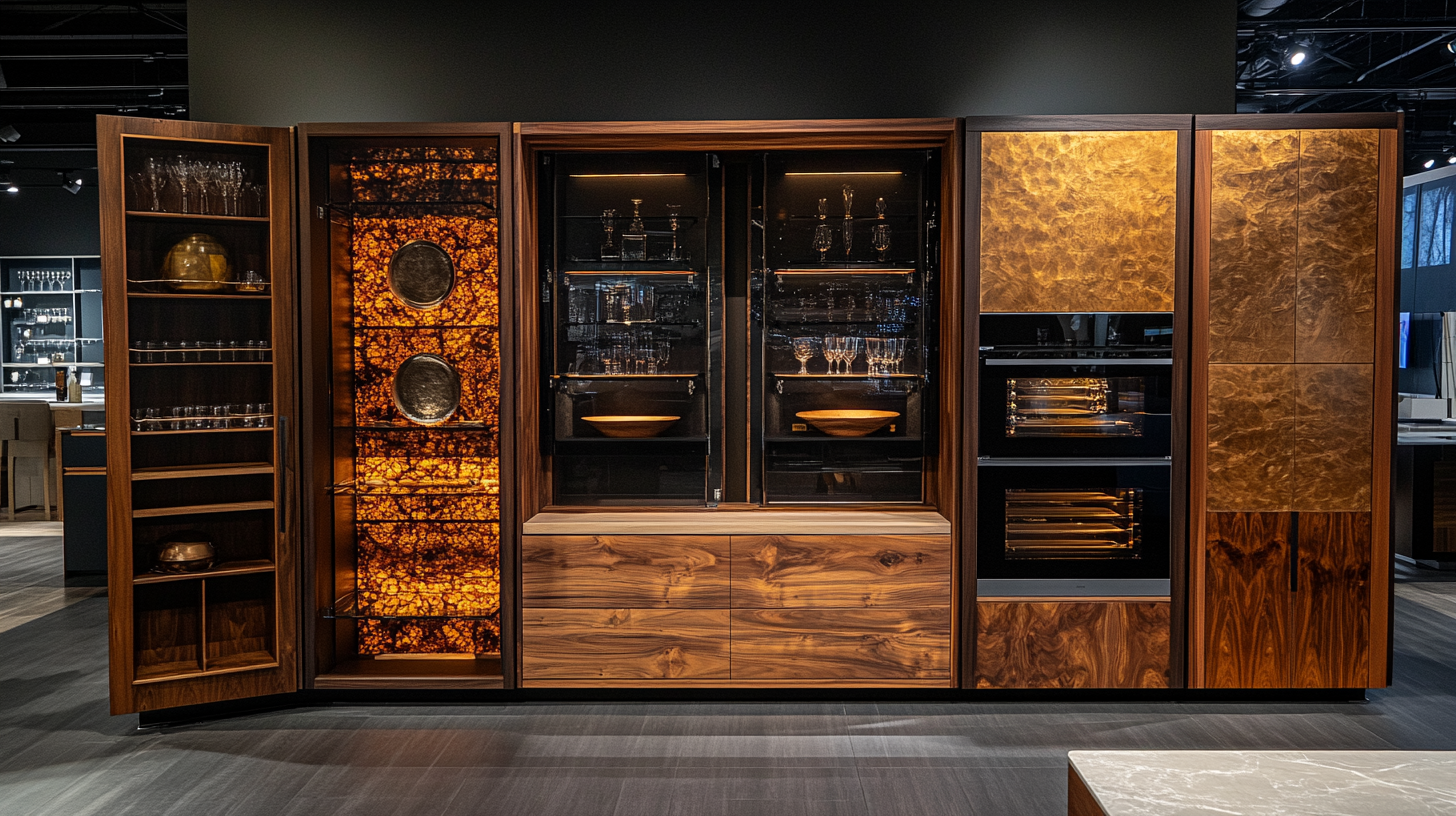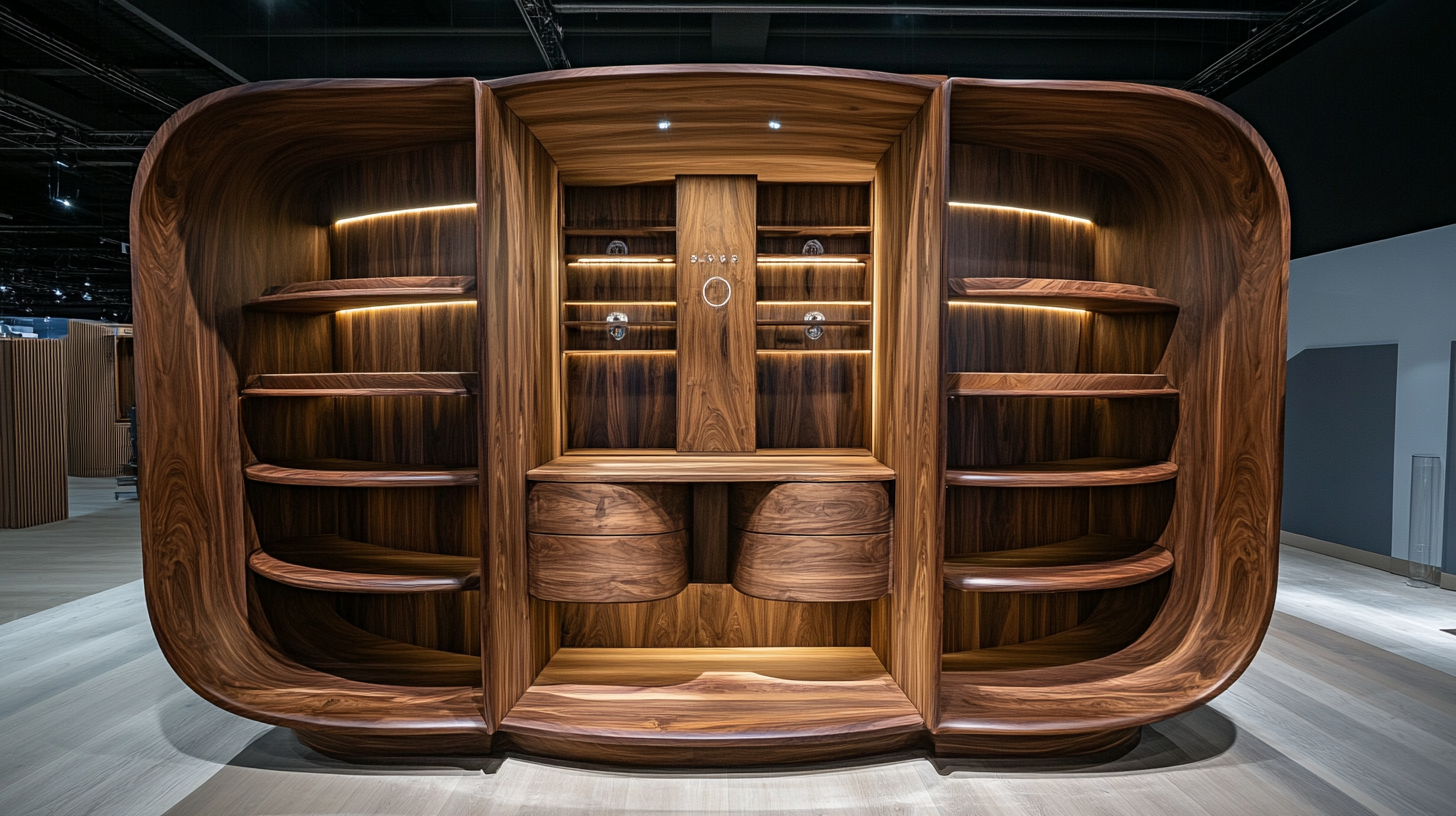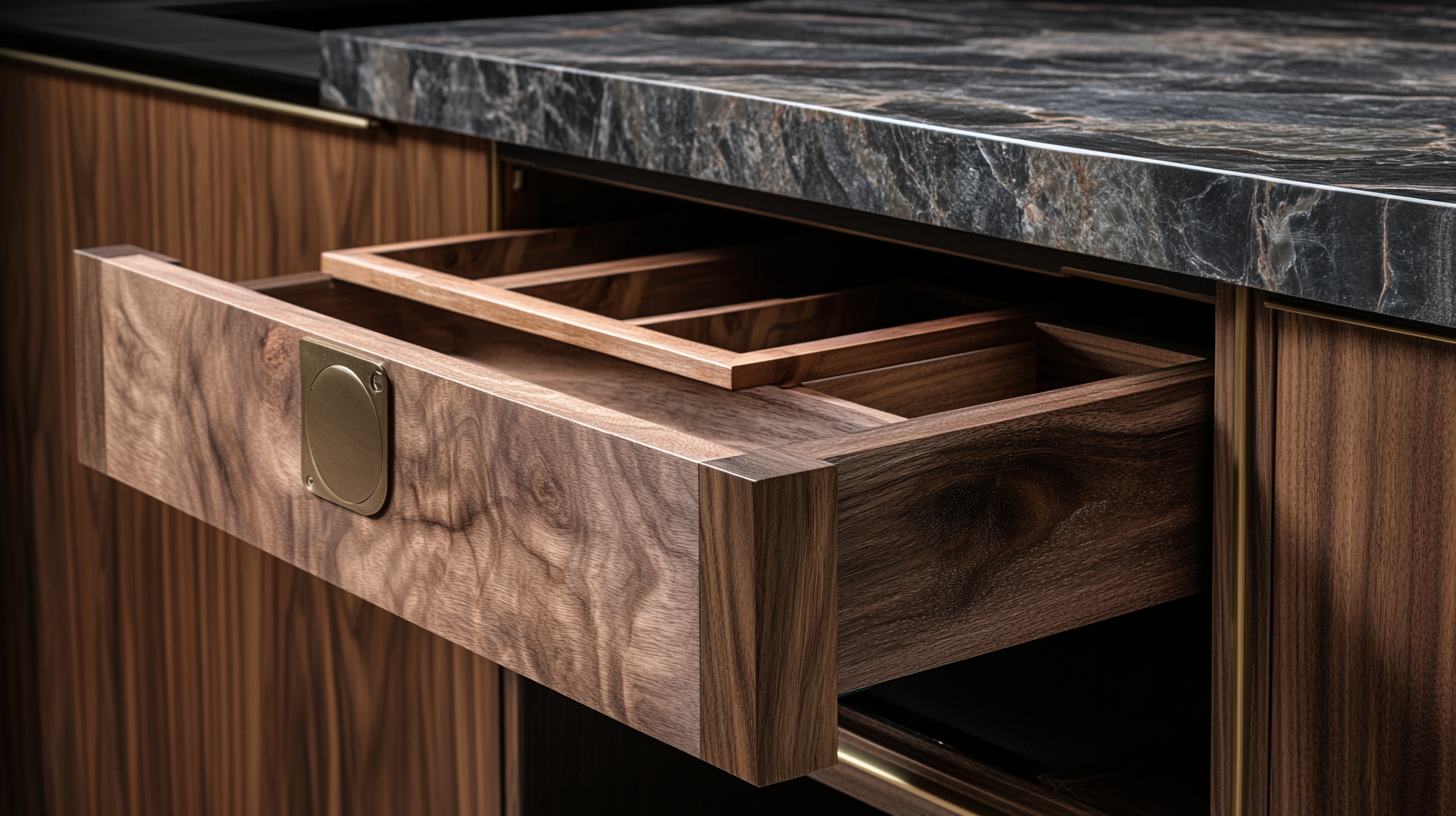2025 Custom Cabinet Trends Unveiling the Top 5 Innovations for Global Buyers
As we step into 2025, the world of interior design is evolving at an unprecedented pace, with custom cabinets taking center stage in home renovation and design projects. The desire for personalized spaces has led to innovative solutions that not only enhance functionality but also reflect individual style and taste. In this rapidly changing landscape, homeowners and designers alike are exploring the latest trends that will shape their environments, making custom cabinets an essential element in achieving a cohesive and stylish look.
This blog delves into the top five innovations that are set to redefine custom cabinets for global buyers. From eco-friendly materials to smart technology integrations, these trends promise to elevate both aesthetic appeal and practicality. Join us as we uncover how these exciting advancements in custom cabinetry are transforming the way we think about storage solutions and creating spaces that truly resonate with today's modern lifestyle.

Sustainable Materials: The Eco-Friendly Revolution in Custom Cabinets
As the demand for sustainable living continues to rise, the custom cabinet industry is embracing a pivotal transformation through the use of eco-friendly materials. Recent studies indicate that more than 70% of consumers are willing to pay a premium for sustainably sourced products, illustrating a clear market shift towards greener options. This trend is not merely a passing phase; it reflects growing awareness about environmental issues and an increased desire for healthier living spaces. A prominent innovation in this realm is the use of reclaimed wood, which not only reduces waste but also adds unique character and history to custom cabinetry. The National Association of Home Builders (NAHB) reports that the use of reclaimed materials has increased by over 50% in the past five years, indicating a widespread acceptance and appreciation for sustainable woodworking practices. Furthermore, manufacturers are now exploring alternatives like bamboo and recycled metals, which offer similar durability and aesthetic qualities while minimizing environmental impact. In addition to sourcing eco-friendly materials, new finishing techniques are emerging that prioritize non-toxic solutions, significantly reducing harmful chemicals typically found in cabinetry. The California Air Resources Board (CARB) mandates stricter emissions standards that have prompted many manufacturers to innovate in ways that keep air quality in mind, contributing to healthier indoor environments. This focus on sustainability among custom cabinet makers not only aligns with consumer preferences but also enhances brand loyalty, positioning them favorably in an increasingly competitive marketplace.

Smart Technology Integration: Enhancing Functionality with IoT Solutions
The integration of smart technology in custom cabinets is revolutionizing how consumers interact with their home spaces. As the Internet of Things (IoT) continues to penetrate the smart home market, significant projections highlight the influence of this trend. By 2032, the market for wireless IoT sensors is expected to grow from $8.33 billion in 2024 to approximately $32.41 billion, indicating a robust CAGR of around 18.5%. This growth is indicative of a broader shift towards interconnected systems that enhance user experience through automation and improved functionality.
In particular, smart kitchens are at the forefront of this innovation, with devices like smart appliances and integrated lighting systems becoming essential. The global smart building market is set to be valued at $103 billion in 2024, driven largely by increased demand for energy efficiency and sustainable solutions. These factors lend credence to the notion that custom cabinetry must now encompass technology that not only meets aesthetic needs but also Funktionalität through intelligent design solutions.
Furthermore, in the realm of artificial intelligence (AI) applications, the AIoT market is projected to see impressive growth, potentially reaching over $10.8 billion by the end of 2023. The ongoing digital transformation initiatives across government and private sectors underpin the need for advanced user interfaces in household items. As this convergence unfolds, the demand for smart technology in custom cabinets will likely rise, ensuring homeowners enjoy an unparalleled level of convenience and efficiency in their living environments.

Minimalist Designs: Embracing Simplicity and Clean Lines in Cabinetry
The minimalist design trend has increasingly permeated various industries, from technology to automotive, reflecting a broader cultural shift towards simplicity and functionality. In the realm of cabinetry, 2025 is poised to unveil innovative designs that embrace clean lines and understated elegance, setting new standards for global buyers. The essence of minimalist cabinetry lies in its ability to create serene spaces that promote wellness and focus, effectively transforming homes into havens of tranquility.
This design ethos is mirrored in the latest trends in other sectors as well. For instance, the newly revealed interior of the Deep Blue S05 SUV showcases a sleek, minimalist dashboard equipped with a large, floating central screen, epitomizing the future of automotive design. Similarly, consumer electronics are embracing this trend with products like the Leader Kamandi Gray refrigerator series, which caters to young consumers who prioritize clean aesthetics and the promise of a clutter-free lifestyle.
Furthermore, fashion and retail are not untouched by this movement; brands like ANINE BING and VEILANCE are redefining urban style through minimalist approaches that fuse practicality with modern elegance. Such innovations resonate deeply in today’s fast-paced world, where the quest for simplicity and efficiency is more crucial than ever. The minimalist trend in cabinetry, therefore, not only aligns with aesthetic preferences but also reflects a lifestyle choice that prioritizes clarity and purpose in home design.

Custom Finishes and Textures: Personalizing Aesthetic Appeal for Every Home
As we move towards 2025, the kitchen cabinet market is poised for exciting developments, driven by an increasing demand for customization and personalization. Among the key innovations reshaping this industry are custom finishes and textures that allow homeowners to infuse their unique aesthetic into their living spaces. This trend is not just about choosing colors; it's about creating a tactile experience that reflects individual tastes and complements the overall design of each home.
Wood, plastic, metal, and glass remain the primary materials in the cabinet market, each offering distinct advantages that cater to different preferences. Wooden cabinets are timeless and provide warmth, while metal offers a sleek, modern feel. Plastics and glass, on the other hand, cater to contemporary styles and practical needs, such as easier maintenance and cleaning. The rise of customizable options in these materials means that buyers can mix and match to find the perfect combination that fits their vision.
Moreover, the segmentation of kitchen cabinets into stock, semi-custom, and custom categories allows for a tailored approach to any kitchen renovation project. From beadboard cabinetry that emphasizes a classic charm to shaker and flat-panel designs catering to modern minimalism, the breadth of styles available ensures that every homeowner can find precisely what resonates with them. This personalization is not just a trend; it’s a reflection of the evolving consumer mindset that values individuality and craftsmanship in their surroundings.
Universal Design: Creating Accessible Cabinets for All Ages and Abilities
The concept of universal design is gaining increasing importance in the realm of custom cabinetry, especially as we look towards 2025 trends. With an emphasis on creating accessible cabinets for individuals of all ages and abilities, manufacturers are tasked with ensuring that their designs not only look good but also function effectively for everyone. This innovation centers around usability, where height-adjustable shelves, pull-out drawers, and easy-to-grasp handles become standard features. As the population ages, the demand for such adaptable solutions will likely escalate, making this trend crucial for global buyers.
Recent events underscore the need for thoughtful design in all areas of life, including home environments. For instance, there have been concerns regarding safety in retail settings, as witnessed by a troubling incident where a young boy purchased a dangerous item without age verification. Such issues highlight the importance of creating not just visually appealing cabinets but also safe and accessible spaces that can prevent potential hazards. By integrating universal design principles, we can cultivate interiors that cater to diverse physical capabilities, ensuring that everyone's needs are met within the home. As we delve into 2025, the future of cabinetry seems bright with innovations that advocate accessibility, safety, and functionality for all.


